| Charvel
Bridges |
| Written
by Jim Shine |
| Charvel offered any bridge by request,
and by default they used bridges supplied by Gary Kahler’s Brass Factory. At the very
beginning these bridges were heavy brass upgrades of the Fender Stratocaster tremolo. A
standout item of these early units is how detailed they are. The inertia blocks are
dressed and polished to a fine luster and often are even plated. Base plates are also
nicely de-burred and very “clean looking”. There were 2 styles typically found. |
| Bent- Called this because the tremolo
base plate is stamped out to shape. |
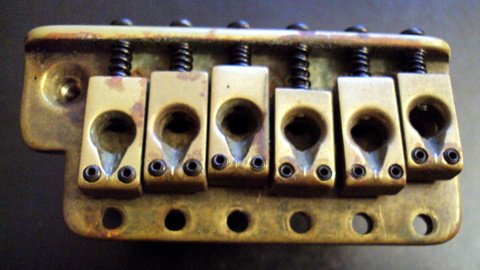 |
Bent plate with
version 1 key hole saddles. |
|
| Milled- Named as such because the base plate was
milled from a solid block of brass. The extra mass of brass behind the saddles was called
the “rail” and there were three different sizes. Small, medium and large.
Charvels typically feature a small sized rail. The grooves in the base plates are called
“Tracks”.This style is often referred to as the “Stars Bridge” because
a company named Stars bought these from the Gary Kahler and resold them stamped with their
own brand name. |
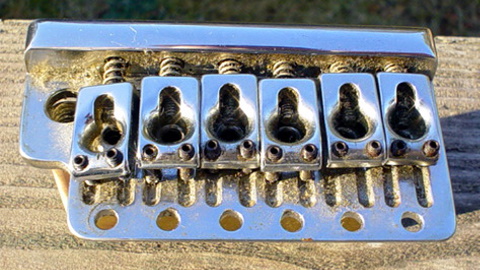 |
Milled base
bridge with version 2 key hole saddles. |
|
| The style saddles on these bridges is
referred to as a “key hole” style because of the round hole with a stem like a
key hole. There are two slight variations in the hole style. Version 1 has a slot that
faces toward the nut and version 2 faces the opposite direction. |
| Gary’s shop was producing these
tremolos for many brands at the time including, but not limited to: Charvel, Fender,
Dimarzio, Stars, Brass Man, Mighty Mite, BC Rich, and Schecter. As demand grew and
production increased we see some if the early fine touches disappear. One of the first and
most obvious changes was to the inertia block. The blocks were no longer detailed. They
had the corners filed off and then was media blasted to de-bur the edges. Base plates had
more squared of edges lacking the older hand rounding of edges. |
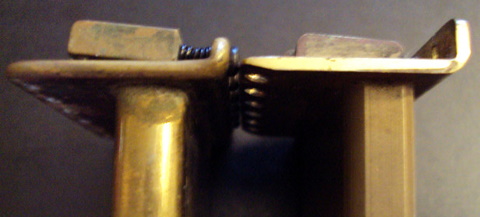 |
| By 1980 the saddles were given a
“slotted” style. They are very similar in design to the saddles Fender making
for Telecaster Deluxes in the early 70’s. The first version of these saddles are
quite a bit longer than usual. It has been said these were redesigned due to issues with
intonation. |
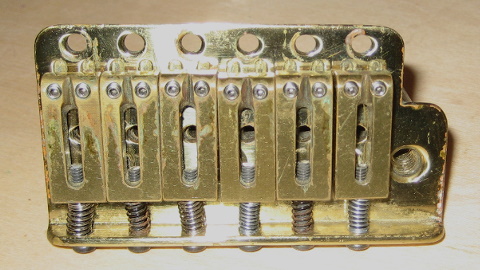
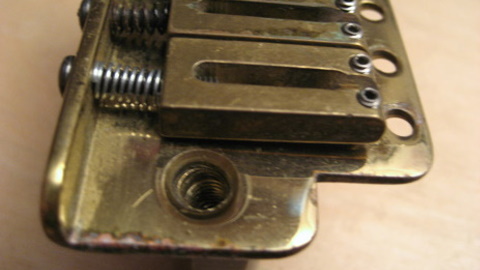 |
| These saddles didn’t last long and
were replaced with the style we all know today as the “standard” Charvel brass
“V-trem”. |
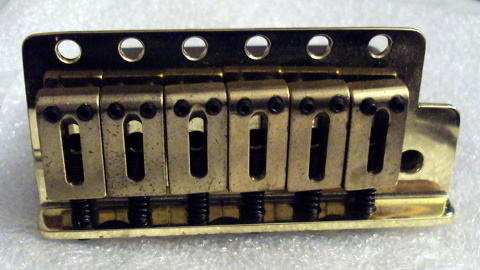 |
| Just like the early “key
hole” bridges, The Brass Factory sold these in 2 1/8” and 2 3/16” spacings.
The visual tell tale built into the saddles is saddles with a squared off edge above the
intonation screw were 2 1/8”, saddles rounded on both ends was a 2 3/16” |
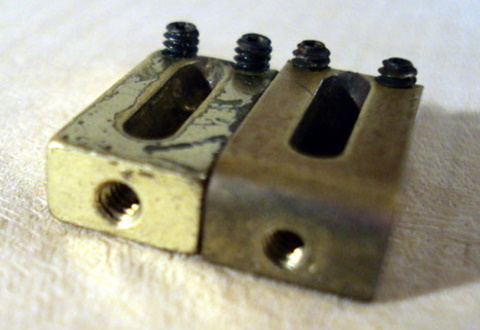
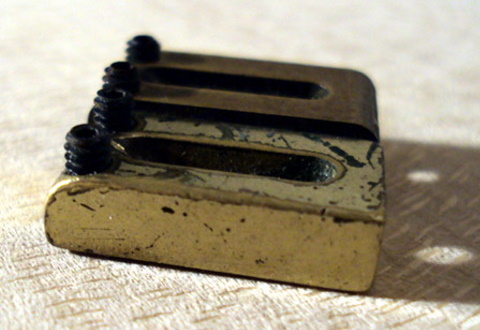
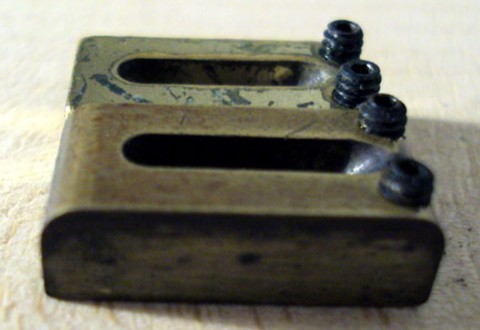 |
| By the early 80’s Gary
Kahler’s company was named “American Precision Metalworks”, or APM. He had
started development of his Kahler tremolo systems at this time. He was focusing more on
those than on his OEM business. There were 2 alternate saddle styles made by APM that can
often be found on Charvels. |
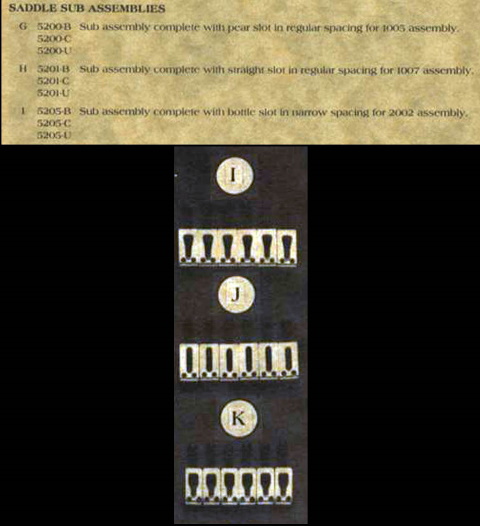 |
| First are the “bottle” shaped
saddles. These are always a narrow spacing. |
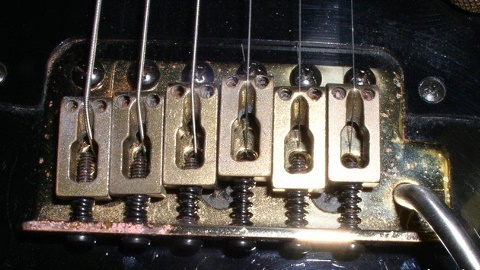 |
| In the same line are the
“Pear” slots, which looks almost like a beaker. These have a tapered cut to the
hole and is a visual identifier to denote these are standard spaced saddles. Many of these
were sold by Fender under the “Brass Works” line of parts. |
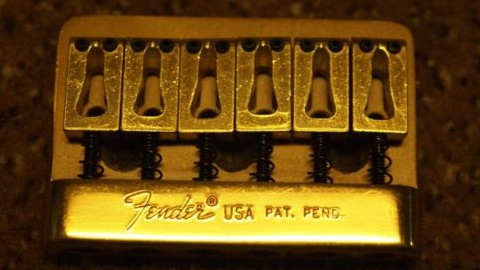 |
|
| Vintage style tremolo tips: |
| I will quickly mention that during the
early 80’s the shape of the tips changed a little. Earlier on the tips were a smooth
brass oval made to look very much like a Stratocaster tip. During 1983 the shape became
pointier and the tooling was set up differently making the overall appearance very
different. This style is what has been reproduced today. |
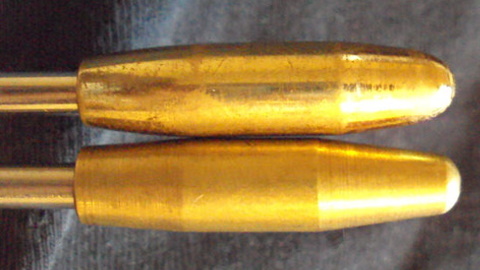 |
Early tip on top,
redesign on bottom. |
|
| “Diamond” or “Witch
Hat” tips were and are still made by Gotoh. Back at the time Schecter and ESP were
selling lots of them. It is unlikely these were factory supplied by Charvel and likely
were installed as replacement after leaving the factory. |
|
| As Gary began winding down his OEM
bridge making to focus on the Kahler line, Grover had to look elsewhere for his standard
tremolos. He had already started using Dimarzio steel tremolos on his Holdsworth models.
He began using them fairly regularly in 1984. These are essential a reissue of the old
Fender Stratocaster tremolo units with full steel construction. Charvels almost always
feature a narrow “G” spaced unit. On the tremolo block and base plate one will
find a G or F stamp denoting the bridges string spacing. |
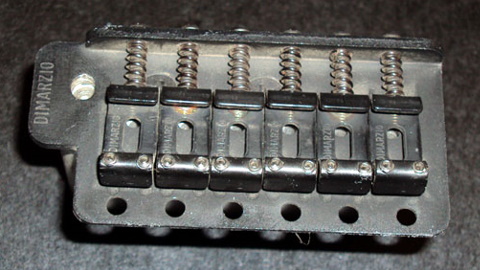
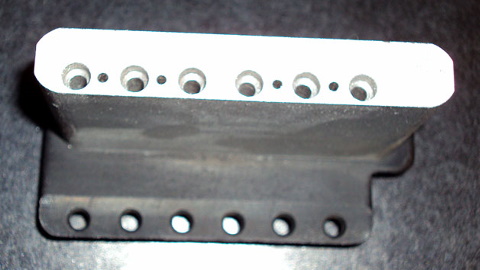
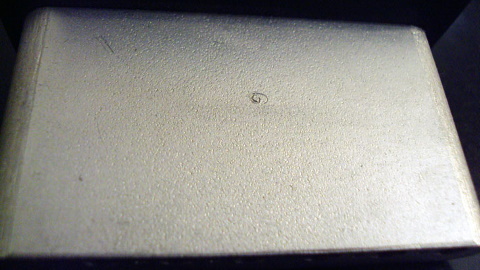 |
|
| Non- Tremolos |
| Most Charvel “hardtails”
feature a Brass Works/APM made standard bridge similar to the tremolos offered in the era.
That means bent plate, milled plate, and the same saddle style all apply. |
| On some prepros we see the use of BC
Rich “Quadmatic” bridge, which was also manufactured by the Brass Factory. |
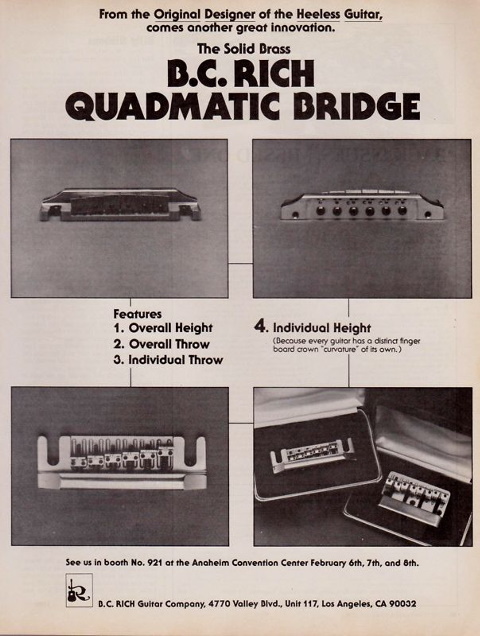
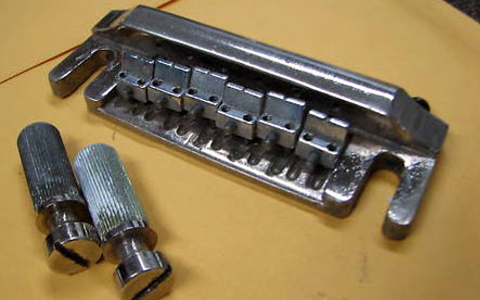
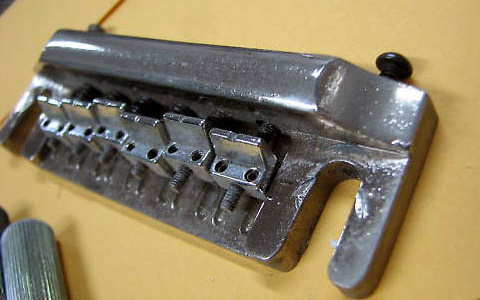
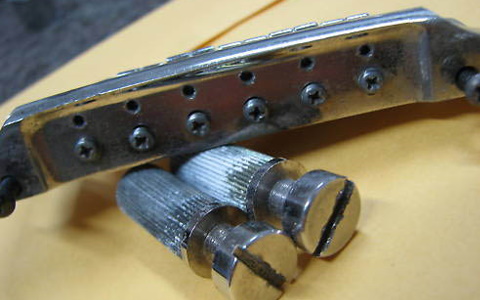
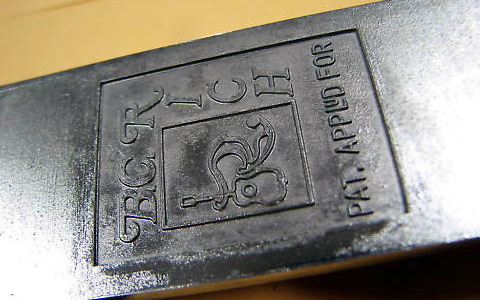 |
|
| Locking tremolos: |
| Due to their custom nature, and thanks
to Eddie Van Halen’s exposure of both brands, Charvels have always been available
with Floyd Rose tremolos. In the earliest days the tremolos were very hard to obtain.
While there may be a couple Charvels made with units actually made by Floyd himself, they
are very scarce. It appears that the majority of Charvels were made during the era
Fernandes was manufacturing Floyd Rose tremolos. These units are very similar to the ones
made by Floyd himself. Especially the earliest units. The two units can be very hard to
tell apart. The most obvious items are the labels (when intact), the fact the Floyd made
units were never stamped with his brand name, and some finer details of some of the parts.
Both units lack a country of origin stamp (except some Fernandes units have “Made in
Japan” on the label) and feature non-removable tremolo arms. You will NEVER see
“Made in Germany” on one of these units. |
|
| Actually made by Floyd unit: |
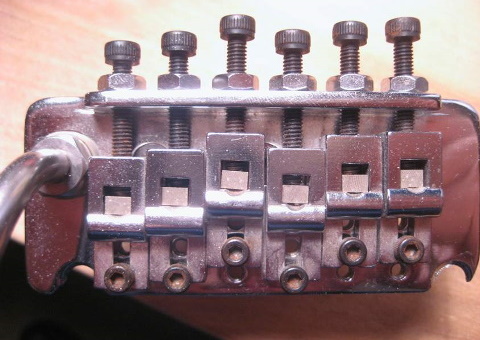
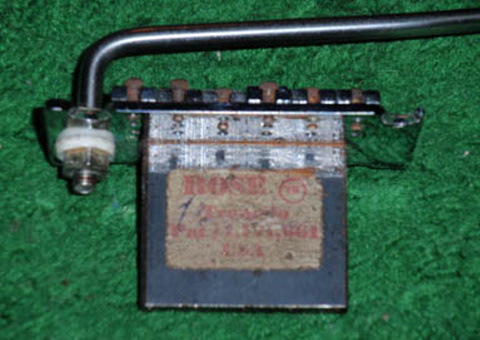 |
|
| Fernandes made units: |
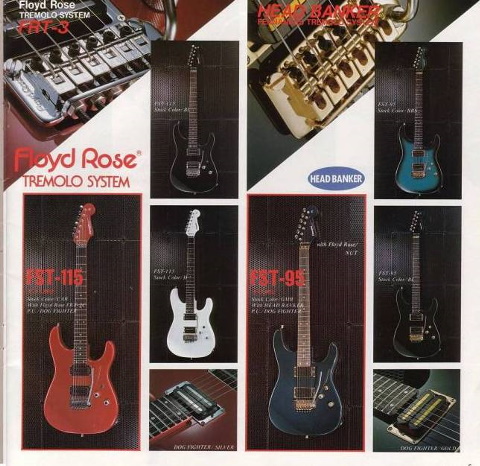
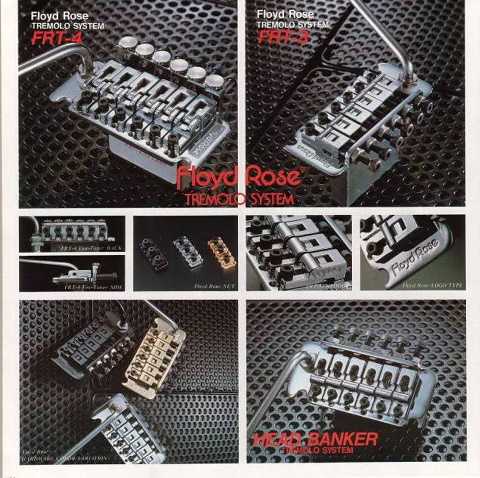
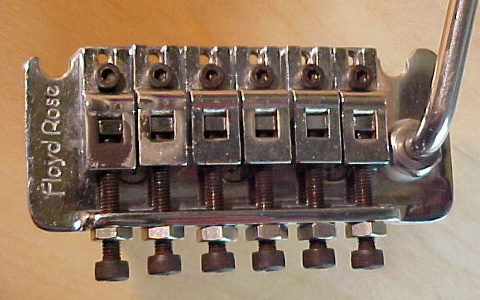
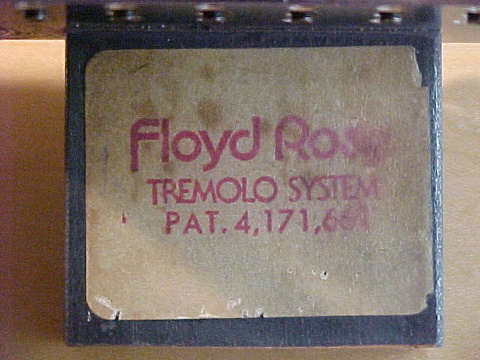
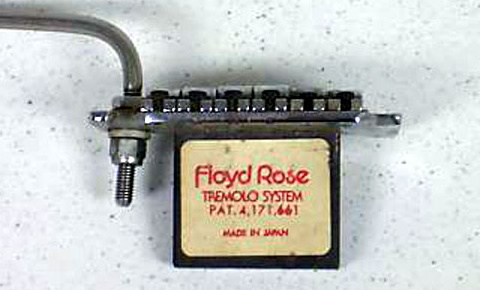 |
|
| Original Floyd Rose |
| The Original Floyd Rose hit the market
in 1983. Kramer guitars purchased an exclusive license from Floyd Rose for his units. They
contacted Schaller in Germany to manufacture a redesigned version of Floyds design with
fine tuners (and made briefly by Fernandes). Under this agreement, Kramer had total
control over the bridges and they did not sell the units “wholesale” to other
manufacturers. The only option outside buying a Kramer was they sold a retail version of
the bridge at a very steep price of $300-400. |
| Because Charvel MFG did not want to say
“No”, they now only would install a Floyd Rose tremolo if it was supplied by the
customer. One would ship in a Floyd and Charvel would install it. In the earliest days
only chrome was available, and even when colors were made available, they were very hard
to get due to backorder. Charvel MFG would sometimes convert the chrome system to the
desired hardware color. Here is an example of a black powdercoated early chrome Floyd
Rose. |
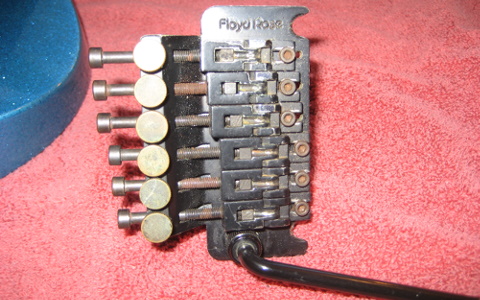
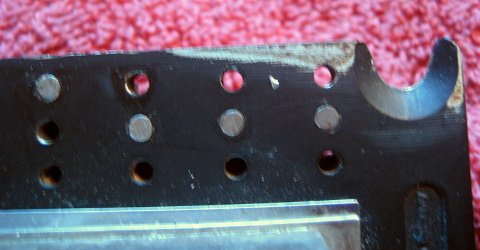
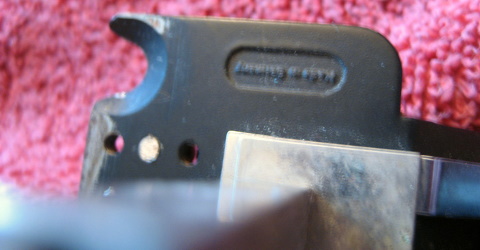
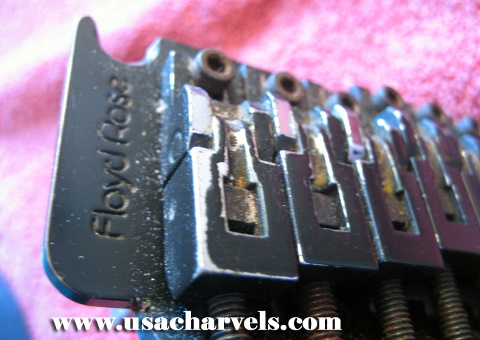 |
|
| Kahler flatmounts: |
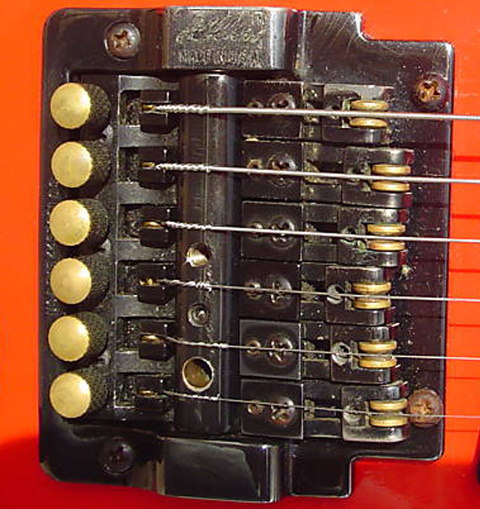 |
| Grover began selling his friend Gary
Kahler’s new “Kahler cam tremolo” units as soon as they were released.
Earliest units feature a “Pat Applied” stamp on the rear. Gold units were
cleared brass for the first year or so, but by 1985 they were chrome plated and had a gold
finish applied. |
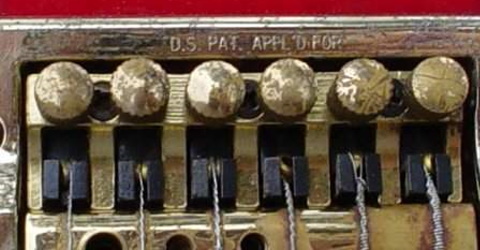 |
| Units with brass rollers and cams are
model #2320 Standard models. Steel rollers and cams are the 2300 “Professional
models”. And lastly, units with steels saddles and cams that have a provision for the
“palm arm and finger control” are 2310 “Professional models” and
sometimes called the “State of the art” model in Kahler catalogs. |
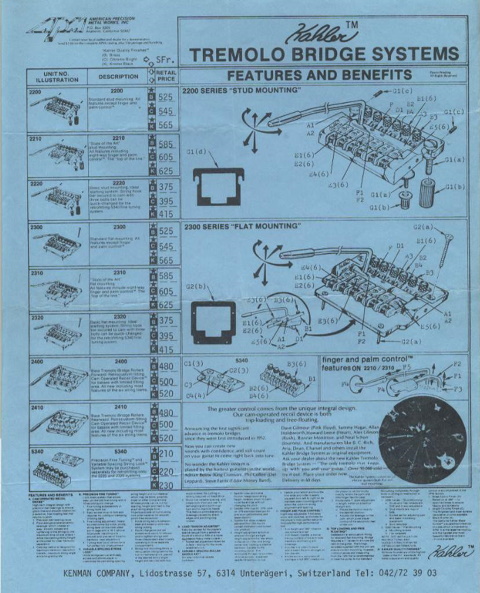 |
|

